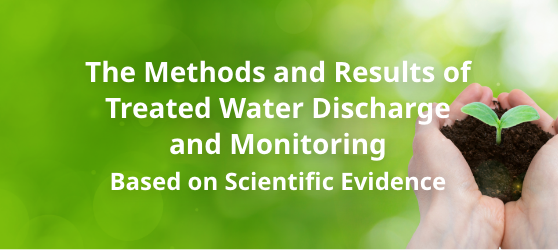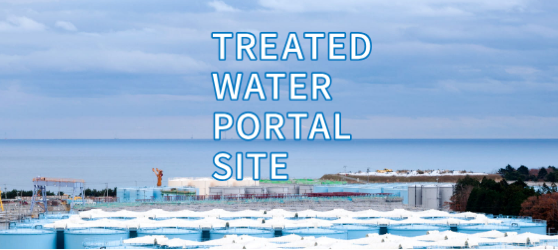Pumping Up Groundwater from Subdrain System (Pits) Around Buildings
To reduce the volume of contaminated water, which increases when groundwater flows into reactor buildings or other contamination sources, a system of subdrains (pits around buildings) was installed, in line with the policy of keeping water away from contamination sources. In this undertaking, first of all groundwater flowing from the mountain side of the site is pumped up from wells (pits) near the reactor buildings, etc. The pumped-up groundwater undergoes decontamination treatment, and after being confirmed to meet national effluent standards, is discharged into the ocean, reducing the amount of groundwater coming into proximity with the reactor buildings, etc.
Overview of Subdrain System (Pits) Around Buildings
Overall view of subdrain system (pits) around buildings
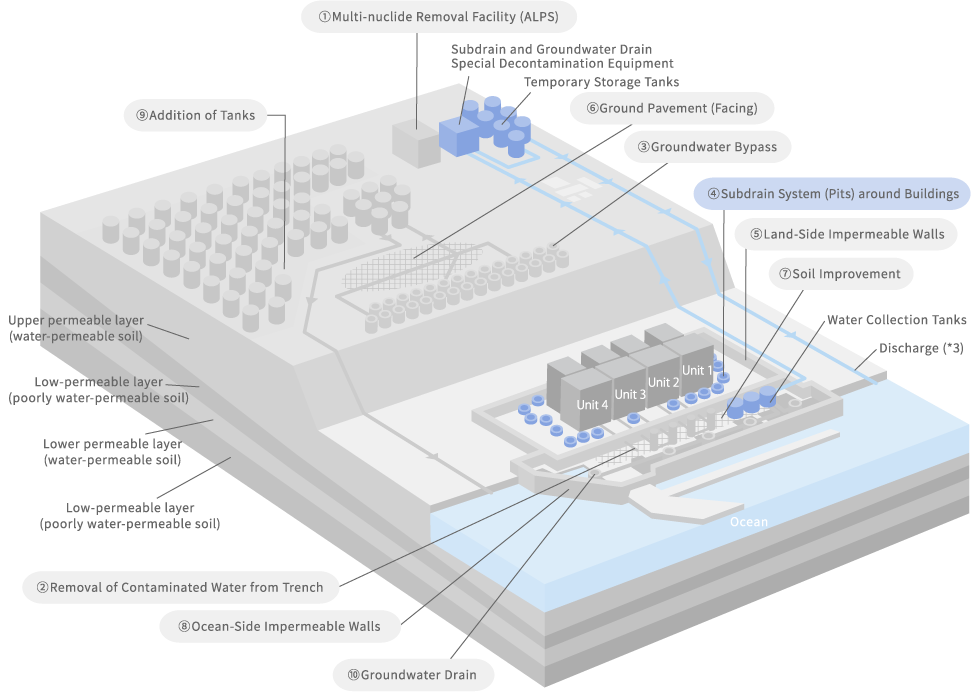
Cross-section view of subdrain system (pits) around buildings
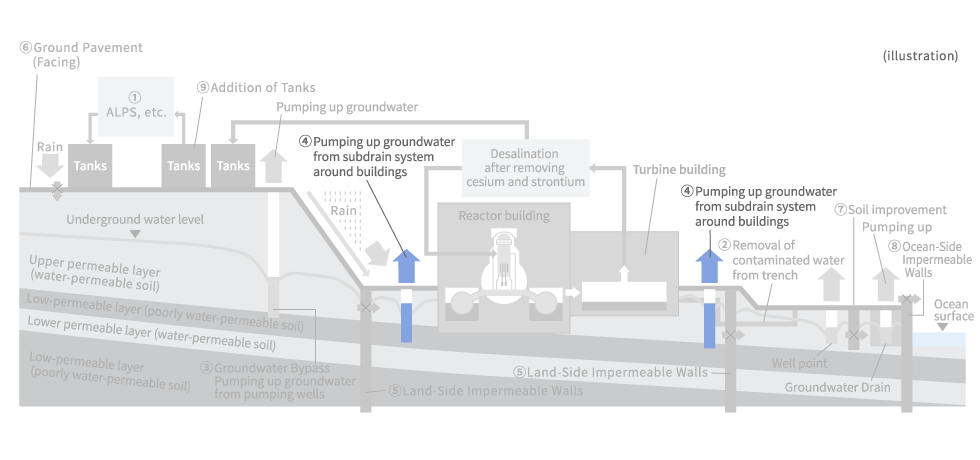
Steps from pumping up to discharge
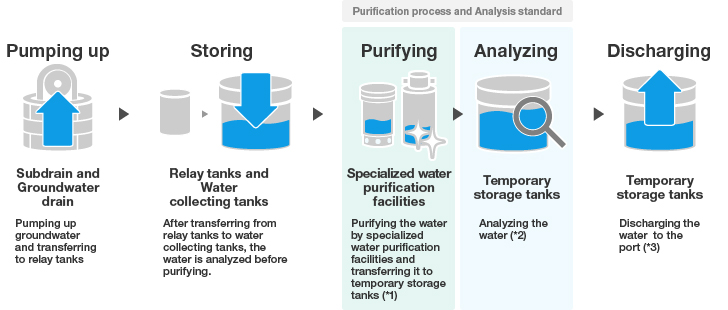
- *1 Special decontamination equipment is capable of reducing the levels of radioactive materials (other than tritium) to around 1/1,000 to 1/10,000.
- *2 TEPCO and third-party agents confirm that the water meets operational targets that are even stricter than the targets (water quality standards) set for the groundwater bypass.
- *3 This will not be done without obtaining the understanding of relevant ministries and agencies and of fishery industry stakeholders.
Decontamination process and analysis standards
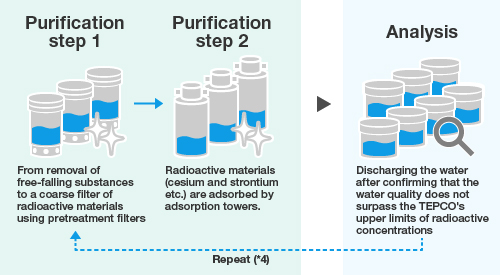
Decontamination treatment reduces levels of cesium and strontium in two stages.
The resulting water is analyzed to confirm that levels of Cs-134, Cs-137, all beta emitters (strontium, etc.), and tritium are within operational targets, and that other gamma emitters are not detected, before the water is discharged.
*4 If cesium or all beta are above operational targets, the water is returned for further decontamination treatment.
If the level of tritium in water collection tanks before decontamination is above operational targets, it is managed to prevent highly contaminated water from being released into the ocean, normally by transferring it to tanks on the power station site.
Status of subdrains
Regular radioactivity analysis is performed on transfer tanks holding pumped-up water and temporarily storage tanks containing water after decontamination. To determine the impact on the maritime environment, radiation levels are also measured at the time of discharge and in the bay and other areas around the power station.










